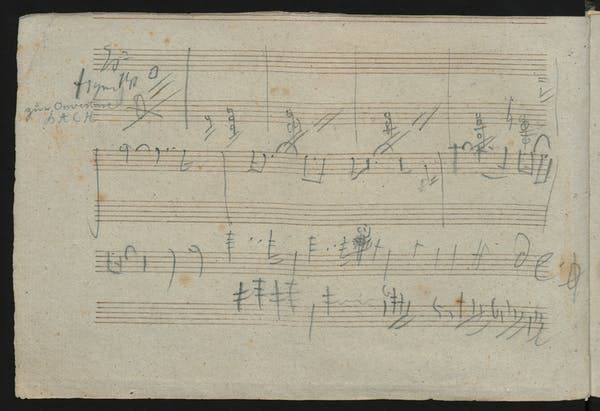
Ludwig van Beethoven is widely regarded as one of the world’s foremost composers. During his career, he wrote dozens of sonatas, concertos, and symphonies, the most famous of which is the legendary 9th Symphony. Despite growing completely deaf, Beethoven continued to write music until the very last days of his life, leaving behind several promising, but uncompleted works. This includes the 10th Symphony, which through the combined efforts of human musicologists and machine-based artificial intelligence has now been completed 200 years after Beethoven’s death.
A machine that mimics human genius
Many have wondered what might have been if Beethoven lived just a while longer to complete the 10th Symphony, but few have dared to actually attempt to complete it themselves. Some musical purists might even see such an attempt as blasphemy, but computer scientists from the startup Playform AI saw it as a challenge and taught a machine both Beethoven’s entire body of work and his creative process.
Symphonies like Beethoven’s 9th typically have four distinct movements: the first is performed at a fast tempo, the second at a slower one, the third at a medium or fast tempo, and the last circles back to a fast tempo to end with a bang. But the 10th was still an early work in progress, with Beethoven leaving behind only a couple of arranged notes and some written down ideas about how the symphony might sound. This is where the AI came in to fill in the blanks.

To bring Beethoven’s final vision to life, researchers and world-class musicologists compiled the composer’s body of work, including the fragments from the 10th Symphony, then fed the dataset to a machine-learning algorithm. For example, the AI learned how Beethoven constructed the 5th Symphony out of a basic four-note motif. Once ‘trained’, it didn’t take long for the machine to start spitting out notes — and they sounded good, too.
“The first time I heard the results from the AI, I was mesmerized [by] the wealth of music [it produced] in such [a] short time,” Walter Werzowa, lead composer of the team, told the filmmakers of The Machine That Feels, a documentary about the present project. “Overnight, the AI gave us 100 to 150 pieces of music. It was goosebumps…. I started crying. It was just overwhelming to hear what the AI could share with us.”
Werzowava was in charge of interfacing computer scientists with his team of musicologists in order to arrange the AI-generated drafts of the 10th Symphony into a form that is playable by an orchestra. This was no trivial task by any stretch of the imagination. The machine not only had to write and bridge musical phrases and learn how to generate harmonies from musical lines, but also how to assign the different parts of the symphony to different instruments, a process known as orchestration. Basically, Beethoven’s entire creative process had to be emulated.
“This was a tremendous challenge. We didn’t have a machine that we could feed sketches to, push a button and have it spit out a symphony. Most AI available at the time couldn’t continue an uncompleted piece of music beyond a few additional seconds,” Ahmed Elgammal, Professor, Director of the Art & AI Lab at Rutgers University and of the developers of the AI, wrote in an article. “We would need to push the boundaries of what creative AI could do by teaching the machine Beethoven’s creative process – how he would take a few bars of music and painstakingly develop them into stirring symphonies, quartets and sonatas.”
Ode to 1s and 0s
Two years into the project, the ambitious team constructed and orchestrated two movements, each around 20 minutes. In November 2019, sections were played by a pianist in front of a live audience, which also included Beethoven experts and music scholars. The audience was challenged to identify where Beethoven’s original phrases ended and where those generated by the AI began, and they couldn’t really tell.
Of course, public reactions were mixed. Felix Mayer is a music professor at the Technical University of Munich described the phrases as “totally senseless music” for the documentary, adding that “music” and “creativity” describe the human domain and are not within the possibilities of machines. Barry Cooper, a world-renowned Beethoven expert who sketched his own complete first movement of the 10th in the past, told Yahoo!, “I listened to a short excerpt that has been created. It did not sound remotely like a convincing reconstruction of what Beethoven intended.”
But the project’s authors never meant for AI to replace Beethoven’s genius or music writing in general. Instead, they envision a future where machines augment songwriting, leading to unique and expressive music at the interface between humans and machines.
You can listen to a sample of Beethoven’s AI-completed 10th Symphony below and let us know what you think in the comments.






